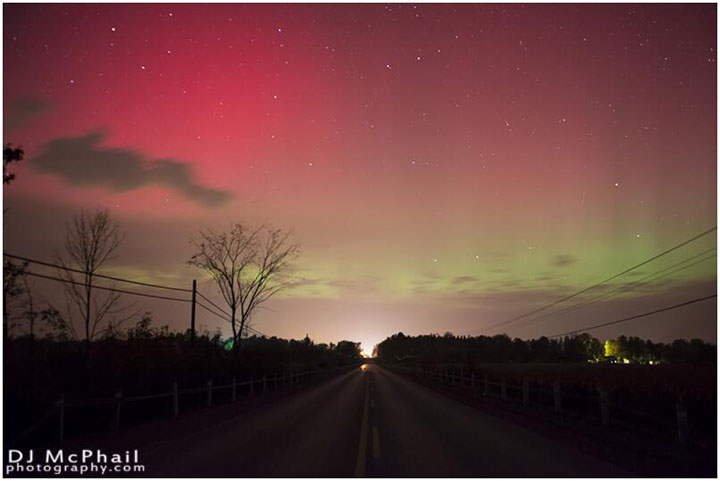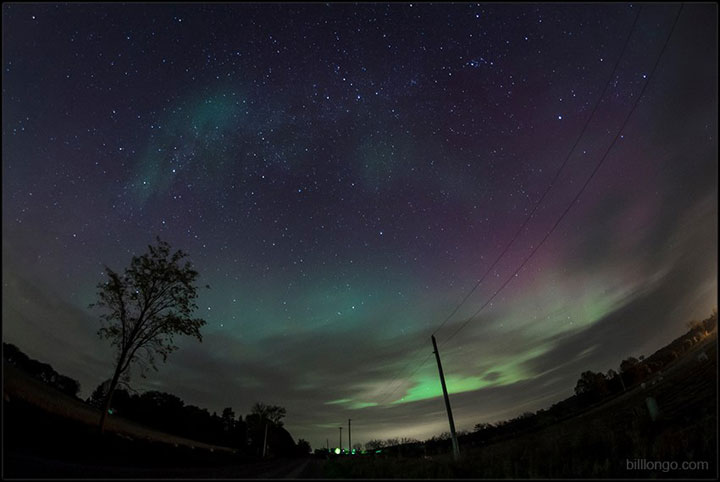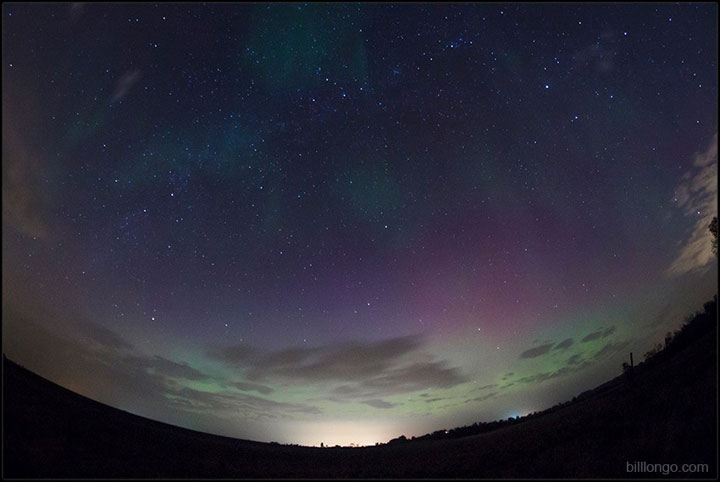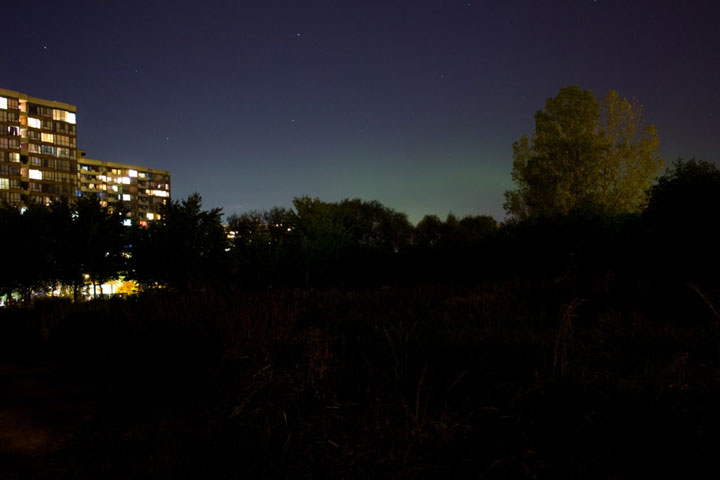TORONTO – A coronal mass ejection (CME) that blasted from the sun’s surface on Sept. 29 arrived a day earlier than expected and resulted in a spectacular light show across Canada.

Read more: Northern Lights dance across night sky
A CME is an ejection of plasma and particles from the sun and travels extremely fast. This one was estimated to have left the sun’s surface at 900 km/s, but arrived earlier than forecasters had expected.
Just north of the Greater Toronto Area, people were treated to red and purple skies as the colours danced among the stars.
There is still the chance that the CME could spark some more aurorae over the next day or so.
The Space Weather Prediction Center (SWPC) in the United States (yes, they’re still working despite the government shutdown), is predicting a 65 per cent chance of a severe storm in high latitudes (25 per cent of a minor storm).

Get daily National news
Northern lights, or the aurora borealis, are triggered when the sun’s particles interact with our magnetic field. The field funnels the particles to the poles.
Aside from producing the Northern Lights, CMEs can also disrupt communication signals and cause electrical surges in power grids. In 1989, an Earth-directed CME caused a blackout in Quebec for several days.
Canada is considered between mid- and high-latitude.
If you’re in a highly light-polluted area, it may be more difficult to see the northern lights, unless it’s a particularly strong display. The best thing to do would be to get out of the city to a darker location.
Also, even if you can’t see it with the naked eye, your camera might be able to. Try setting up a camera on a tripod and taking a ten- to 15-second photograph at a higher ISO (if you have a DSLR camera) aimed to the north and see what turns up. You never know.
So, keep looking up! You never know what treats the night sky might bring you!















Comments